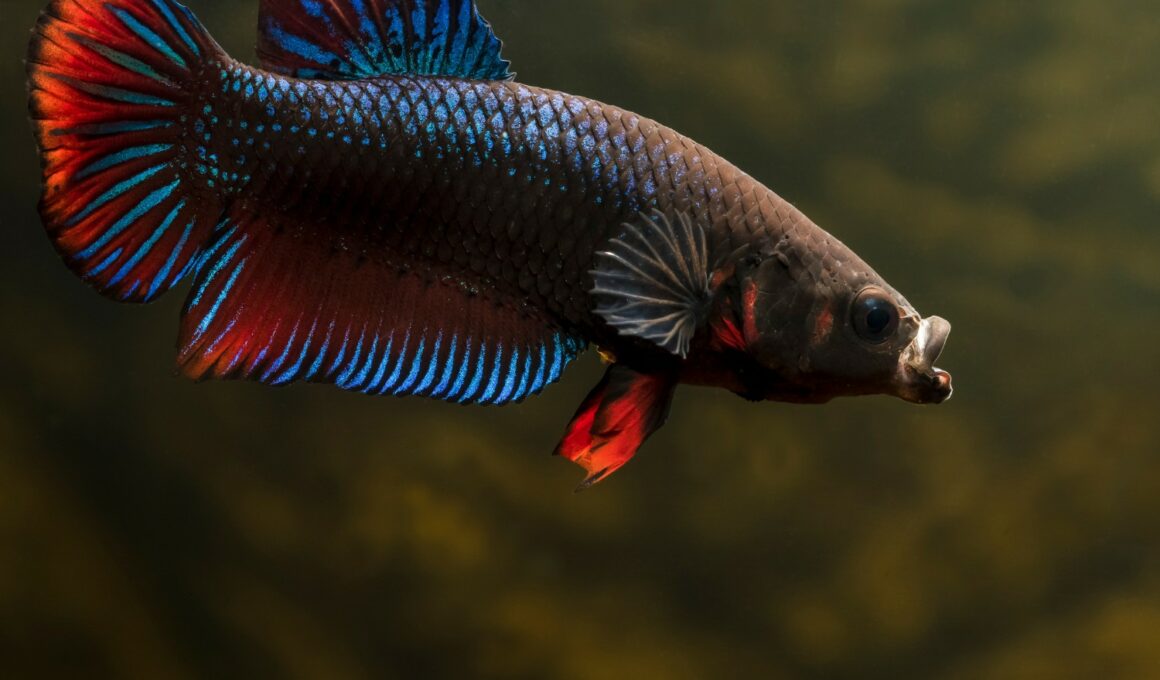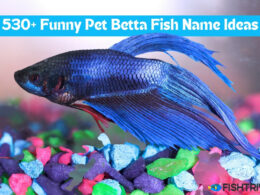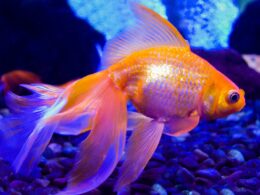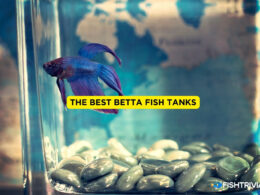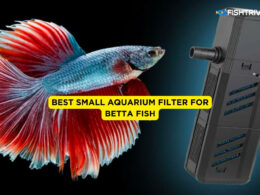In this article Show
Betta fish, with their flamboyant fins and radiant colors, are undoubtedly among the most beloved inhabitants of home aquariums around the globe. They are the crown jewels of many tanks.
But here’s a question I often get: “Who can share their royal space?” Finding the right subjects – or rather, tank mates – for your Betta is crucial, not just for aesthetics but for their overall well-being.
Now, if you’ve ever stood in front of an aquarium store, you’d know the vast options available. It’s like a giant aquatic buffet out there. But not all fish (or critters) play well with our Betta monarchs.
That’s where expertise comes into play. With years of diving deep (pun intended) into the aquatic world, I’ve curated a list to guide you on the 10 Best Betta Fish Tank Mates.
Before we wade into those waters, it’s essential to understand what makes a fish or critter a good roommate for our Betta buddies. So, whether you’re a seasoned fish keeper or a newbie looking to expand your Betta’s kingdom, this guide’s got your back. Dive in!
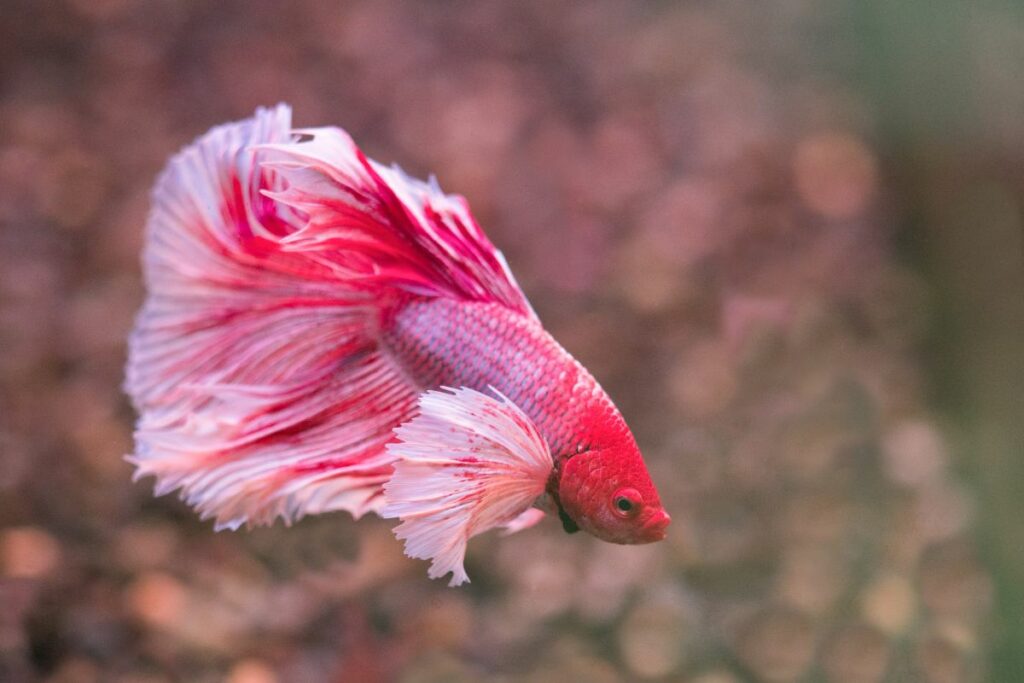
Characteristics of Good Betta Fish Tank Mates
When imagining the best aquatic companions for our Betta fish, there are a few fundamental traits to keep in mind. Just like how we’d prefer a roommate who matches our living style, Betta fish too have their preferences. Let’s get to the heart of these essential characteristics.
1. Non-Aggressive Nature
First and foremost, Betta fish, particularly the males, have a reputation for being territorial. Adding another aggressive fish to the mix is like adding fuel to a fire.
To ensure peaceful coexistence, it’s paramount to introduce tank mates that have a docile temperament. Fish that prefer to mind their own business or swim leisurely without showing signs of aggression are the top candidates.
2. Similar Environmental Requirements
Every fish species has its sweet spot in terms of water temperature, pH level, and overall tank environment.
Pairing your Betta with fish that thrive in drastically different conditions is a recipe for disaster. The key here is to find tank mates that enjoy similar water parameters as Bettas – typically a warm, slightly acidic to neutral environment.
3. Compatibility in Terms of Size and Diet
Size does matter in the fish world. If a fish is too large, it might see the Betta as a snack. Too small, and the Betta might decide it’s lunchtime. Striking a balance is crucial. The ideal tank mate should neither be too intimidating nor too diminutive.
Additionally, while Bettas are carnivorous, they can cohabit well with omnivores. However, ensuring that all the tank inhabitants have access to their preferred diet without competition is essential.
10 Best Betta Fish Tank Mates: A Curated List
Every Betta fish enthusiast dreams of a harmonious tank where their vibrant Betta swims alongside friendly neighbors, creating a lively aquatic ballet. However, pairing your Betta with just any tank mate might lead to more of a battle royale than a serene underwater dance.
But fret not! After extensive research and first-hand experiences, I’ve assembled a list of the ten best companions that can gracefully share the stage with your Betta. From peaceful swimmers to helpful critters, let’s dive into the perfect Betta tank mates.
1. Cory Catfish
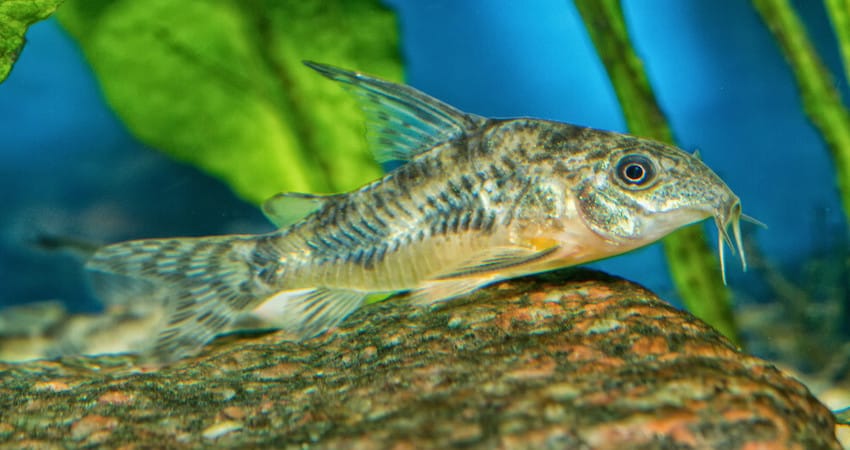
| Aspect | Description |
| Size | 1 to 3 inches |
| Diet | Omnivorous |
| Temperament | Peaceful and non-aggressive |
| Care Level | Easy to Intermediate |
| Minimum Tank Size | 20 gallons for a small group |
Originating from the freshwater streams of South America, Cory Catfish, commonly referred to as “Cories,” are a delightful addition to many aquariums. These petite, armored catfish possess a unique charm, with their flattened undersides and curious whisker-like barbels.
Their bodies, depending on the species, exhibit a variety of patterns and colors. One of their most endearing behaviors is the way they forage, sifting through the tank’s substrate with their barbels, always on the hunt for their next meal.
Their peaceful nature and the fact that they tend to stay towards the bottom of a tank make them particularly good candidates as tank mates for many fish, including the Betta.
2. Ghost Shrimp
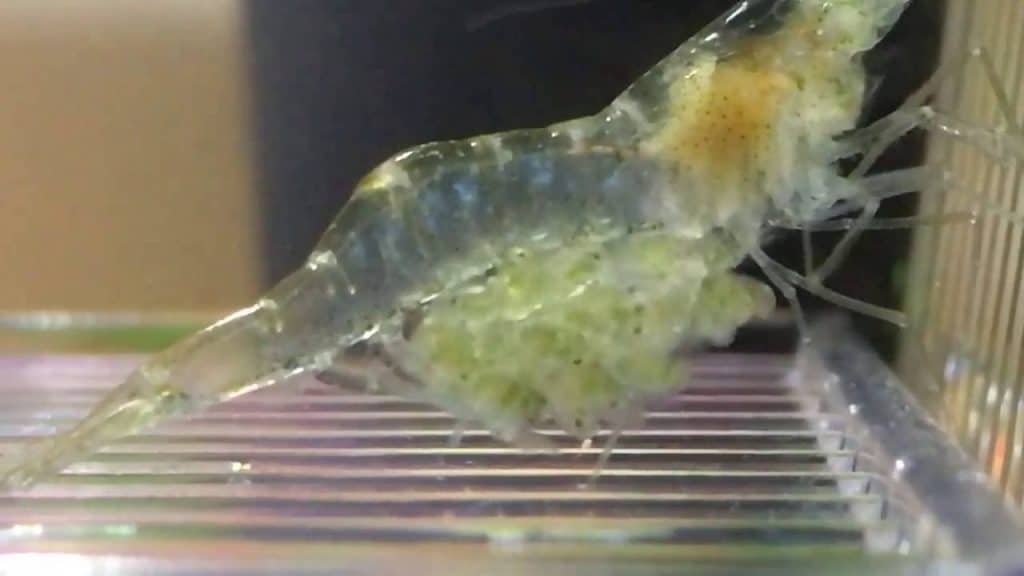
| Aspect | Description |
| Size | 1 to 1.5 inches |
| Diet | Omnivorous |
| Temperament | Peaceful |
| Care Level | Easy |
| Minimum Tank Size | 10 gallons |
Ghost Shrimp, with their almost transparent bodies, make for a fascinating addition to an aquarium. Their see-through appearance often makes them less of a target for Betta fish, as they don’t draw much attention or seem threatening.
Moreover, they serve a dual purpose in a tank: not only are they interesting to watch, but they also act as efficient cleaners.
These tiny critters will continuously sift through the substrate, munching on algae, detritus, and any leftover food particles, ensuring the tank remains cleaner and reducing the buildup of harmful ammonia and nitrites.
3. African Dwarf Frogs
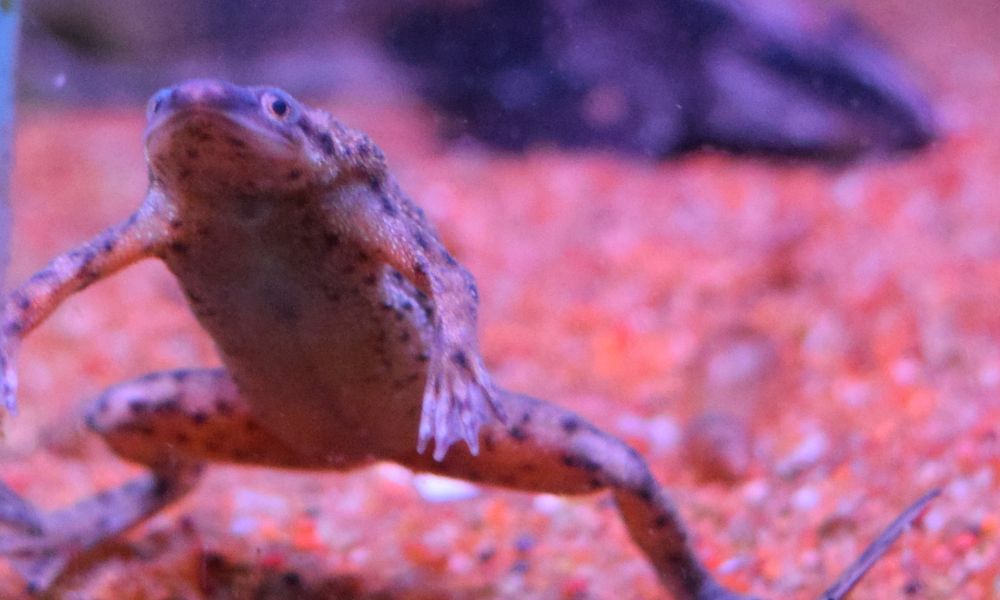
| Aspect | Description |
| Size | 1.5 to 2.5 inches |
| Diet | Carnivorous |
| Temperament | Peaceful |
| Care Level | Moderate |
| Minimum Tank Size | 10 gallons |
African Dwarf Frogs are wholly aquatic amphibians, which means they live their entire lives underwater, unlike many frogs that split their time between land and water.
With their slender bodies, webbed feet, and tiny eyes, they are endearing creatures to observe. They exhibit playful behaviors, often seen swimming in short bursts and hovering in the water.
An amusing trait is their “zen pose,” where they stretch out their legs and appear to be meditating. Their vocal nature is another highlight; don’t be surprised if you occasionally hear them humming or singing, especially during the evening.
4. Neon Tetras
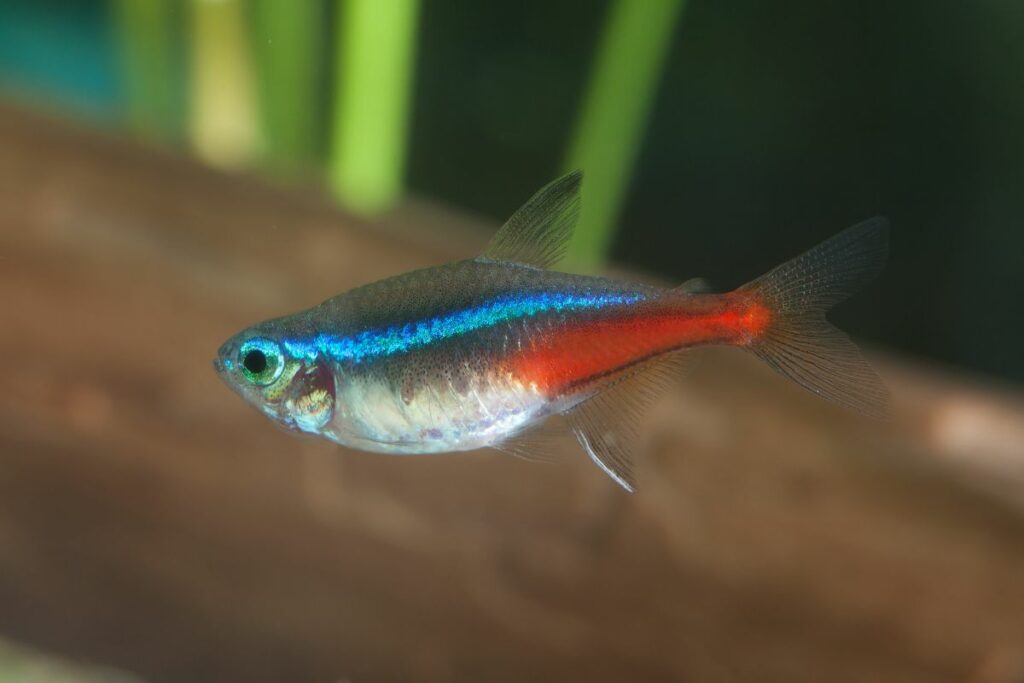
| Aspect | Description |
| Size | 1.5 inches |
| Diet | Omnivorous |
| Temperament | Peaceful and schooling |
| Care Level | Easy to Intermediate |
| Minimum Tank Size | 10 gallons |
Glistening like aquatic gems, Neon Tetras capture the essence of the tropical waters with their electric blue and radiant red hues. This dazzling color combination runs horizontally, making them stand out vividly against any backdrop.
But it’s not just their appearance that’s striking. These fish are schooling by nature, meaning they love—and thrive—in groups. Watching a school of Neon Tetras dance synchronously through the water is truly an aquatic ballet, adding a dynamic and mesmerizing element to any aquarium.
5. Ember Tetras
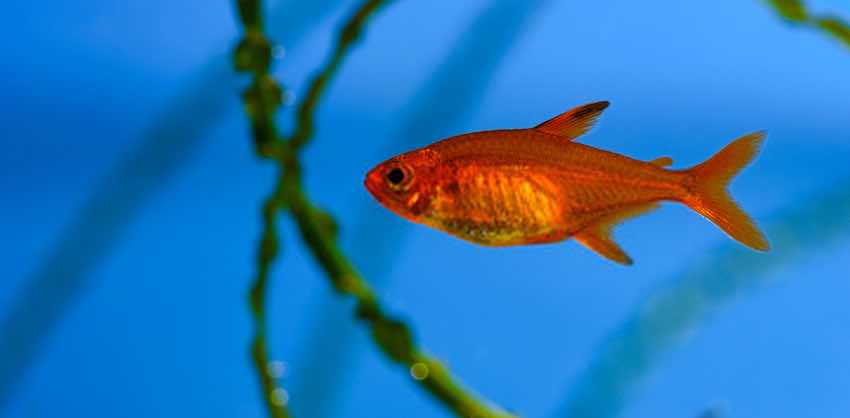
| Aspect | Description |
| Size | 0.8 to 1 inch |
| Diet | Omnivorous |
| Temperament | Peaceful and schooling |
| Care Level | Easy |
| Minimum Tank Size | 10 gallons |
Ember Tetras, with their fiery orange-red hue, might look lively, but they possess a surprisingly serene demeanor. Smaller and more subdued in their activity than some other tetras, their tranquil nature often resonates well with the equally peaceful Betta fish.
Like many schooling fish, Ember Tetras prefer the company of their kind, but they don’t typically exhibit nippy or overly curious behaviors. This makes them less likely to irritate or stress a Betta.
Their tendency to swim together in a harmonious group can also offer a visually soothing experience, allowing the Betta to coexist without feeling threatened or overshadowed.
6. Harlequin Rasboras

| Aspect | Description |
| Size | About 1.5 to 2 inches |
| Diet | Omnivorous |
| Temperament | Peaceful and schooling |
| Care Level | Easy to Intermediate |
| Minimum Tank Size | 10 gallons |
Harlequin Rasboras are renowned for their striking appearance, characterized by a metallic-hued body complemented by a dark, triangular patch towards their tail. But beyond aesthetics, they’re a preferred choice for Betta tanks due to their peaceable nature and compatible tank behavior.
Rasboras, being schooling fish, add a synchronized, fluid movement to the aquarium without being overly boisterous or nippy. Their placid disposition makes them unlikely to provoke or annoy Bettas, leading to a harmonious tank environment.
Additionally, their size and general swimming patterns ensure they neither intimidate nor get bullied by Betta fish, making them an ideal match.
7. Snails (Mystery and Nerite)
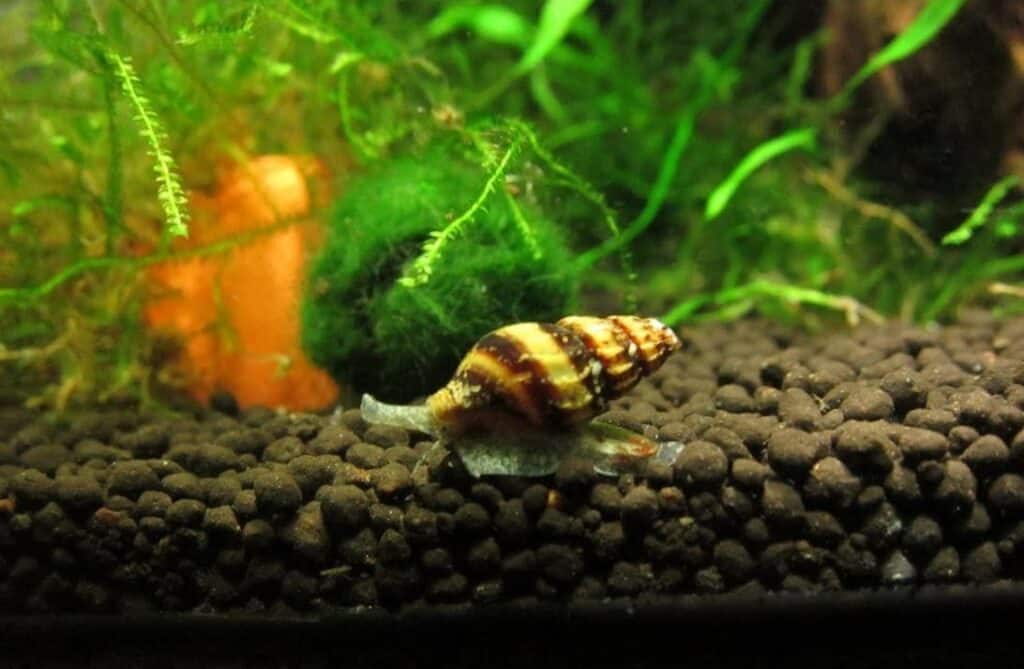
| Aspect | Mystery Snail Description | Nerite Snail Description |
| Size | 2 inches | Up to 1 inch |
| Diet | Omnivorous | Omnivorous |
| Temperament | Peaceful | Peaceful |
| Care Level | Easy | Easy |
| Minimum Tank Size | 5 gallons | 5 gallons |
Snails, by nature, are diligent cleaners. They’ll happily consume algae, leftover food, and detritus, helping keep the tank pristine. Snails lead a slow, non-intrusive life. They won’t bother or stress your Betta, making them one of the safest tank mates.
While Betta fish are undoubtedly the stars of the tank, snails add an intriguing dimension to the aquarium’s ecology, creating a more diverse and engaging environment.
8. Khuli Loaches
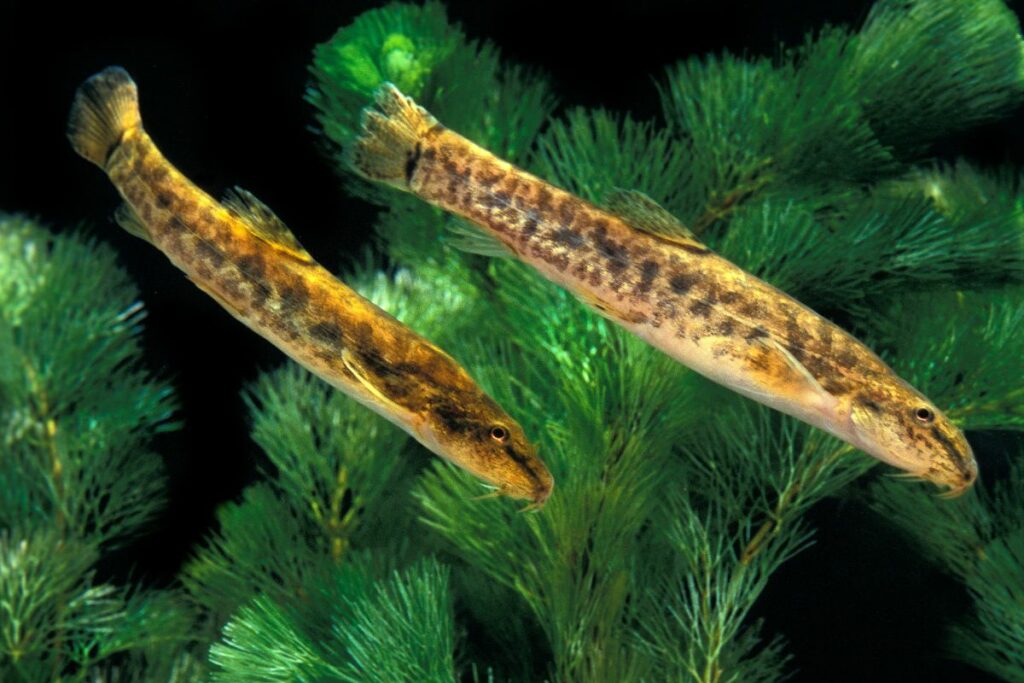
| Aspect | Description |
| Size | 3 to 4 inches |
| Diet | Carnivorous |
| Temperament | Peaceful and nocturnal |
| Care Level | Intermediate |
| Minimum Tank Size | 20 gallons |
Khuli Loaches, often referred to as “eel-like” due to their slender and elongated bodies, are one of the unique and captivating bottom dwellers in the aquatic world. One of their defining behaviors is their love for burrowing into the substrate.
This instinctual behavior serves as a protective mechanism, allowing them to hide from potential threats and rest during the day. Their burrowing nature means they usually don’t cross paths with middle to top-dwelling species, making them compatible with Betta fish.
Given their nocturnal tendencies, they’re often more active during the evening or when the tank lights are dim, which further reduces the chances of territorial disputes with Bettas.
9. White Cloud Mountain Minnows
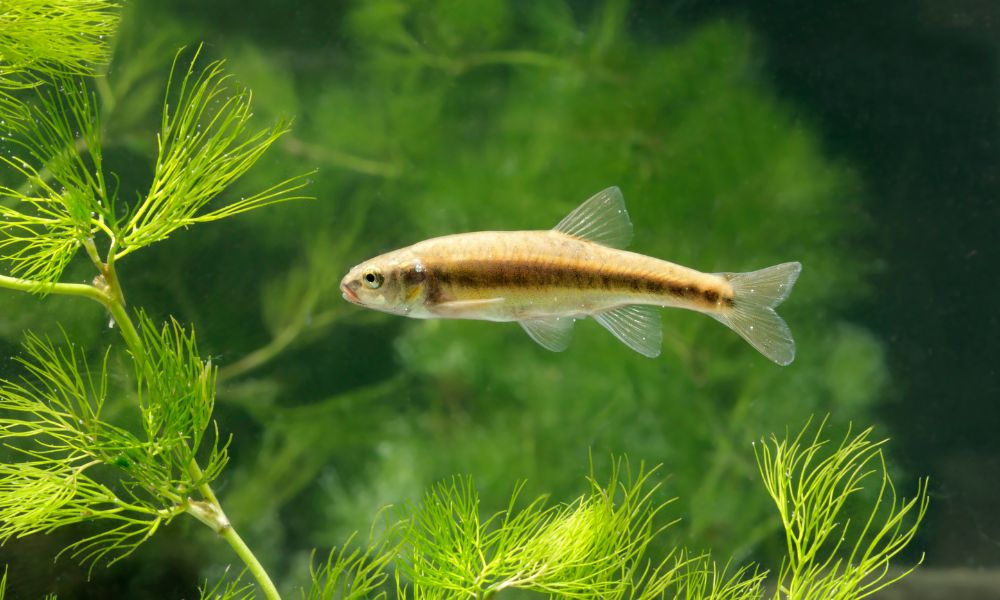
| Aspect | Description |
| Size | 1 to 1.5 inches |
| Diet | Omnivorous |
| Temperament | Peaceful and schooling |
| Care Level | Easy |
| Minimum Tank Size | 10 gallons |
White Cloud Mountain Minnows, often just referred to as White Clouds, are like gentle whispers in the bustling world of aquatic fish. They exude a sense of calmness and are known for their non-aggressive, easy-going temperament.
These minnows are schooling fish, and when in a group, their collective gracefulness becomes even more evident. Their tranquil nature means they coexist harmoniously with many fish species, including the Betta.
Given their size and demeanor, they are unlikely to provoke or become a target for Betta aggression.
10. Otocinclus Catfish
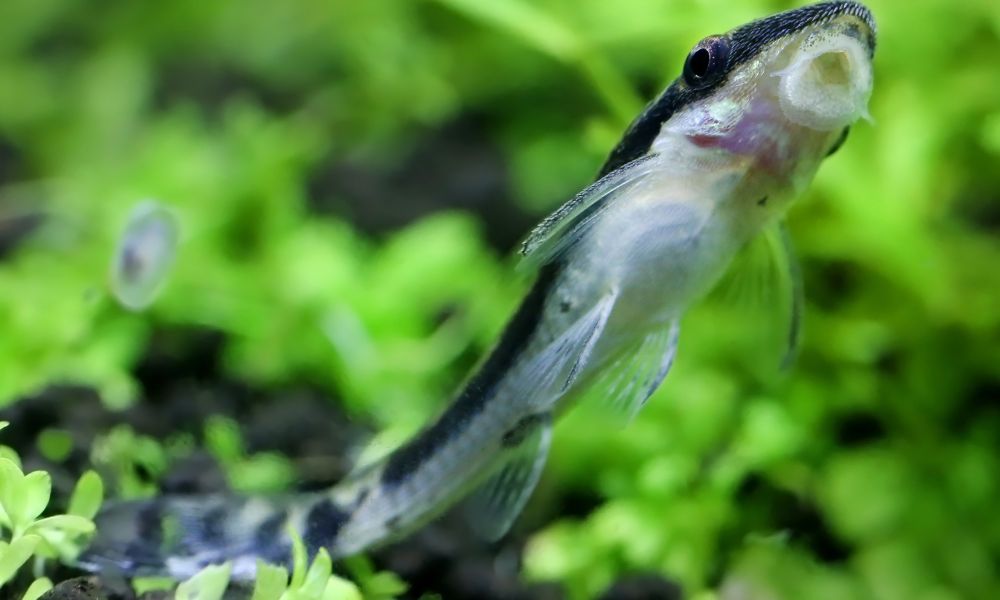
| Aspect | Description |
| Size | 1 to 2 inches |
| Diet | Herbivorous |
| Temperament | Peaceful |
| Care Level | Intermediate |
| Minimum Tank Size | 10 gallons |
Otocinclus Catfish, affectionately dubbed “Otos” by many aquarists, is like the diligent janitors of the freshwater aquarium world. Their primary diet consists of algae, making them invaluable for maintaining a clean tank.
With their sucker mouths, they cling onto surfaces, tirelessly scraping off unsightly and potentially harmful algae films. This not only ensures that your tank walls, decorations, and plants remain clean but also helps in balancing the nutrient levels and preventing excessive algae outbreaks.
Tips for Introducing New Tank Mates to a Betta Tank
Introducing new tank mates to your Betta’s domain is akin to welcoming a new roommate into your home. While the right match can lead to a harmonious living situation, the wrong choice or process can result in conflict. Here’s how to make the transition smoother:
1. Acclimatizing New Mates
Drip Acclimatization
Instead of directly dropping your new fish or critter into the tank, use the drip acclimatization method. This involves slowly introducing the tank water to the bag or container holding the new mate, allowing them to adjust to the water’s temperature, pH, and other parameters gradually.
Quarantine
Before adding any new mates to your Betta tank, it’s wise to quarantine them for a couple of weeks. This step ensures they don’t bring any diseases or parasites into the main tank.
2. Monitoring Behaviors
Initial Observation
Once you’ve introduced the new mate, observe both the Betta and the newcomer closely for the first few hours and then periodically over the next few days. Look out for signs of aggression or stress, such as flaring, chasing, or hiding.
Feeding Time
Monitor behaviors during feeding times to ensure all tank inhabitants are getting their share without any conflicts.
Have a Backup Plan
In case things don’t go well, it’s essential to have a backup plan. This could mean having a separate tank or a divider on hand to separate the Betta from its tank mate if necessary.
3. The Role of Tank Size and Decorations:
Spacious Environment
A cramped space can exacerbate territorial disputes. Ensure that your tank is adequately sized for the number and type of inhabitants. A larger tank offers more space for territories and reduces the chance of conflicts.
Zoning with Decorations
Use plants, caves, rocks, and other tank decorations to create natural barriers and zones. These can serve as hiding spots and territories, reducing the chances of territorial disputes.
Distraction
Floating plants or toys can serve as distractions for the Betta, reducing its focus on the new tank mate, especially during the initial introduction.
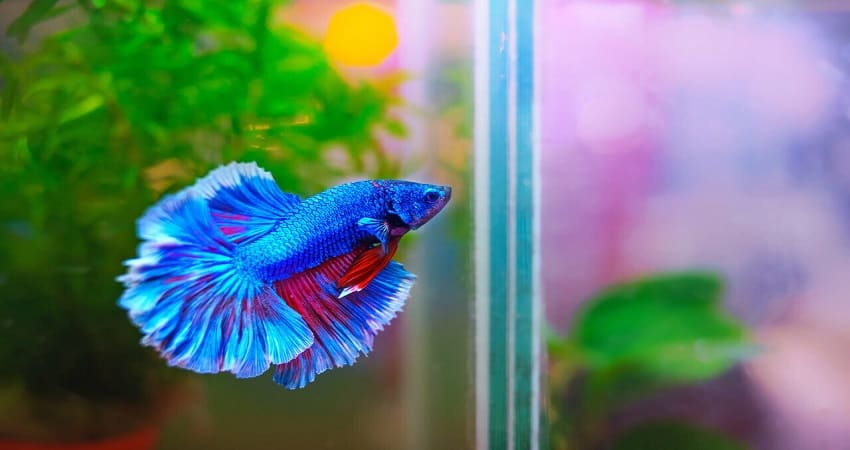
Common Mistakes to Avoid in Aquarium Keeping
Fishkeeping can be a rewarding hobby, offering relaxation, education, and a piece of nature’s beauty right in your living space. However, even seasoned aquarists can sometimes make mistakes. Here are some common pitfalls and how to steer clear of them:
1. Overcrowding the Tank
Overcrowding not only stresses the fish due to limited space but also leads to a faster buildup of waste, depleting the oxygen levels and increasing toxic compounds like ammonia and nitrites.
Always research the adult size of the fish you’re buying and their space requirements. Consider both the number and size of the fish. A general rule is to have 1 gallon of water for every inch of fish, but this can vary based on the species.
2. Mixing Multiple Aggressive Species
Combining aggressive species can lead to continuous territorial disputes, stress, injury, or even death. Some fish are known fin-nippers, while others may be outright predatory to smaller tank mates.
Research the temperament of every species you’re considering. It’s not just about whether they’re peaceful or aggressive but also how they might interact with specific species. When in doubt, consult with experienced fishkeepers or aquatic professionals.
3. Not Researching the Specific Needs of Each Species
Each fish species has unique requirements regarding diet, water parameters, habitat, and social needs. Assuming a one-size-fits-all approach can lead to unhealthy or stressed fish.
Before purchasing any fish, invest time in understanding their specific needs. This includes optimal water temperature, pH levels, dietary needs, and any unique behaviors or requirements. Tailor your tank environment to cater to the needs of its inhabitants.
Bonus Tips
- Ignoring Water Quality: Regular water changes and monitoring of ammonia, nitrite, and nitrate levels are essential. Neglecting this can result in a toxic environment for your fish.
- Impulse Buying: Always plan before buying a new fish. Ensure your tank can accommodate them and that they’re compatible with current inhabitants.
- Skipping Quarantine: New additions should always be quarantined before introducing them to the main tank to prevent potential disease spread.
Final Thoughts
Successful fishkeeping hinges on thorough research and careful planning. By avoiding common pitfalls like overcrowding, mixing aggressive species, and neglecting species-specific needs, you can ensure a harmonious and healthy aquarium environment. Remember, a little knowledge and preparation go a long way in the world of aquatics.






